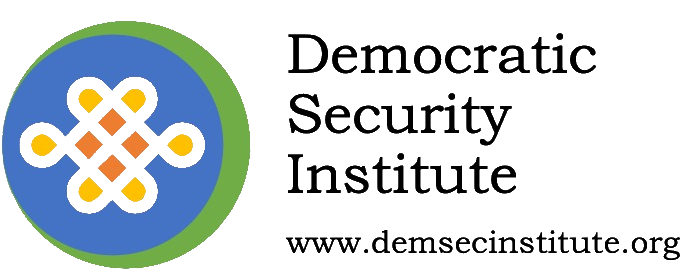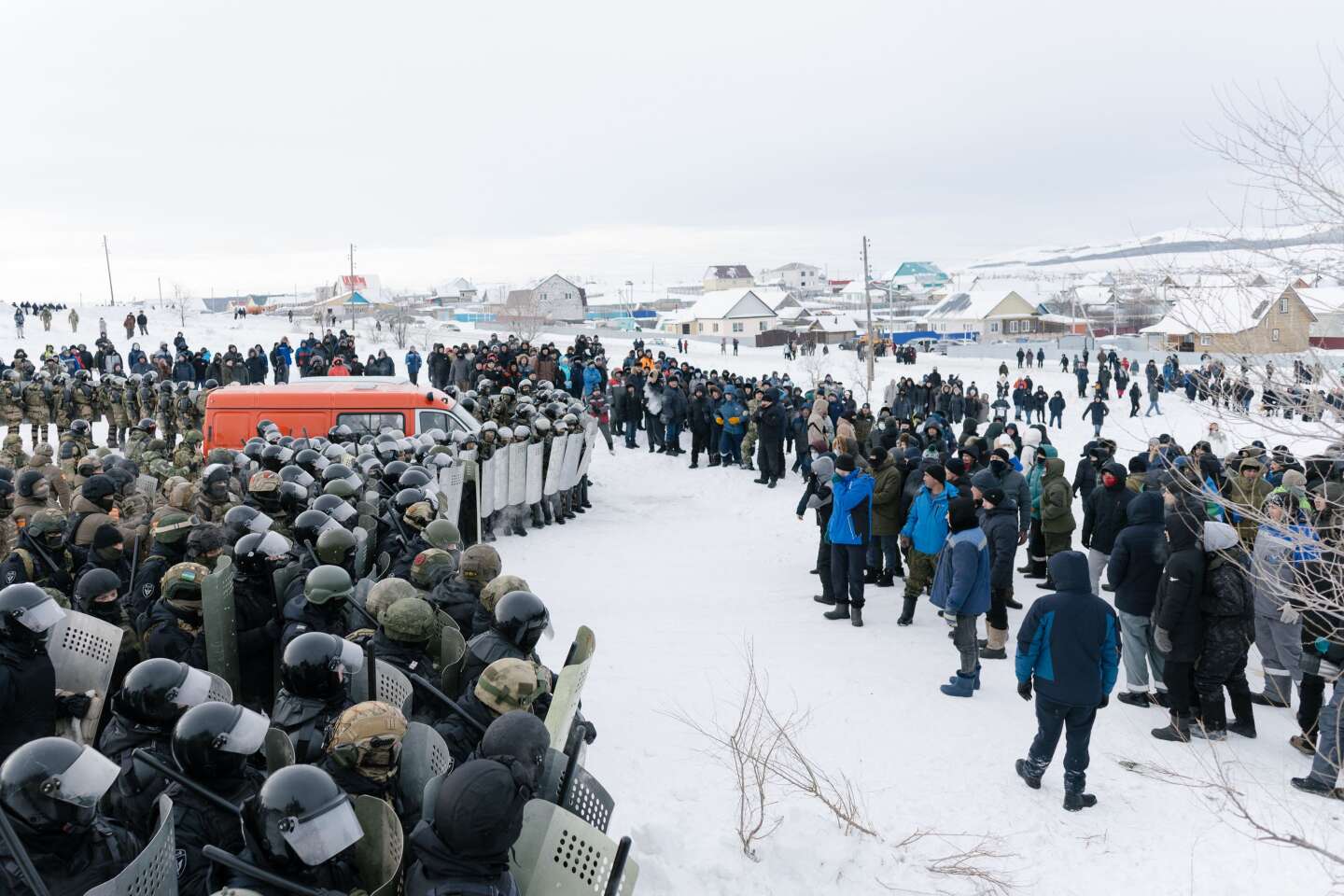‘Each patch of these 236 hectares has heirs to them in the village; their ancestors owned these lands even before the Soviet collectivization of 1920’, a man from the Republic of Dagestan says in a video recorded outside a local mosque on a snowy February day.
‘We, residents of the village of Khubar…are standing up against everything that the district administration has done’, he adds as a group of village men and elders standing behind him nods in approval: ‘We will not allow for our land to be thrown away.’
The punchy nearly four-minutes-long speech is an appeal to federal authorities in Moscow to interfere in a conflict between Khubar’s residents and local authorities who approved a handover of 236 hectares of their lands to a new village being erected nearby.
With new repressive laws adopted each month and well-known opposition actors either dead, imprisoned or exiled, some commentators have been quick to pronounce civil society in Russia as non-existent.
Yet, the story of Dagestan village residents is one of several dozen cases of leaderless pro-democracy resistance that I have seen unfold across the country over the three years of Moscow’s invasion of Ukraine, accompanied by an unprecedented assault on dissent in Russia.
These acts of dissent are waged by different actors and range in size: from thousands-people-strong protests in the Republic of Bashkortostan to a small Indigenous Evenk community in the Republic of Sakha coming together to defend their reindeer-herding lands from an oligarch.
But they also are more similar than not.
These protests have unfolded hundreds of miles away from the capital Moscow – most of them in Russia’s ethnic republics or areas populated by minoritised communities.
All of them are a part of much grander fights for preserving the right to public participation in local politics and Indigenous peoples’ fundamental right to land and resources — an existential matter for smaller rural communities trying to sustain their traditional livelihoods.
Notably, the stand-off between Dagestan’s Kremlin-installed authorities and residents of Khubar, a village of Indigenous Avars, took place as Russia’s State Duma moved to adopt a controversial reform overhauling Russia’s constitutionally mandated two-tier system of local self-government.
The legislative change, which has been demanded by Putin for years but vocally opposed by the likes of the Republic of Tatarstan’s head Rustam Minnikhanov, allows regional governments to dismantle the lower-tier urban and rural municipal governments.
In practice, the change would mean that residents of small villages like Khubar will have even fewer means of lobbying for their interests and persuading authorities to finance local infrastructure development projects, paving the way for more local-level conflicts.
Just like the many pre-war protests in Russia’s republics — including Bashkortostan, Ingushetia, and Komi — recent cases of dissent adhere to best success-bound practices tried and tested by nonviolent resistance movements worldwide: they are leaderless and driven by a shared vision of the future, focus on small gains and most often rely on tactics that pose least risks, leaving mass protests mobilization as a matter of last resort.
The next logical question would be: if these protests are so well organised, fundamentally important for understanding Russia’s civil society, and widespread, then why is no one talking about them?
There are a few structural reasons for this.
The first one is the unequal state of Russia’s media landscape. Economic disparities between Moscow and ethnic republics, plus educational inequality at the university level, mean that few Indigenous people have access to top-quality journalism training and few can enter newsrooms of major federal-level independent news outlets – if they do, they are unlikely to be involved in editorial decisions. News from ethnic republics and Indigenous communities either do not make it into major publications at all or get distorted when they do.
In the case of Dagestan’s Khubar, the conflict was described by mainstream media as a strike by teachers in support of the dismissed principal of a local school. Though school principal Magamedrasul Isakov indeed was fired from his post, the move was a part of the standoff over the land handover — a fact that slipped away in the reports.
Similarly distorted was the portrayal of the 2024 large-scale nonviolent protests in Bashkortostan’s Baymak, which many news outlets and Russian commentators described with the word ‘revolt’ in the headlines; English-language media followed suit, labeling the protests ‘violent’.
Distortion is coupled with the exoticisation of Indigenous peoples in media, but also the normalisation of the usage of ethnic and racial slurs. Let’s take the example of a non-Indigenous media project Nerusskiy Mir (‘Non-Russian World’). For racial and ethnic minorities living in Russia, Nerusskiy is more than a mere descriptor: it is an often-triggering word, a slur used against them by Russian nationalists.
Much like the African-American community reclaimed the ‘N-word’, Russia’s Indigenous people and minorities are now reclaiming this slur as an act of resistance, but in no way does that mean that it is acceptable to use the word as a name of a news outlet.
Inequalities in Russia’s journalistic community are further boosted by donors. Together with other Indigenous content creators, I have attended countless meetings with major Western donor organisations in which decision-makers blatantly stated that partnering with ‘more competent’ Russian colleagues would be the only way an Indigenous project could be funded (I won’t name and shame these big-name organisations in line with Chatham House rules).
The majority of Indigenous-led initiatives from Russia are run on a 100% volunteer basis.
Inequalities in media are mirrored in the academia. Russia studies are universally Moscow- and ethnic-Russian-centric, glancing over the experiences and struggles of 30 million Indigenous people and ethnic minorities.
More than 30 years after the Soviet collapse, the videos of the Swan Lake ballet broadcasted from Moscow to its conquered subjects is still the image most often used to describe the starting point of Russia’s transition to democracy, whether past or future.
Symbols aside, Russia’s widely unsuccessful transition of the 1990s should have taught scholars at least one thing: top-down democratisation led by Moscow is unlikely to bring a lasting positive change to this vast and diverse country.
The extent of regional-level democratic resistance today proves that ethnic republics and regions are cradles of the country’s future equality and democracy.
Russia’s democratic future must start in regions, or it won’t happen at all.
This blog is published in partnership with the Democratic Security Institute (DSI) based in Tbilisi, Georgia. It is part of a series of blogs authored by fellows from DSI’s Eurasia Democratic Security Network (EDSN) on the interrelationship between democracy and security in Europe’s eastern neighbourhood. EDSN is supported by the US National Endowment for Democracy (NED).
Image credit: Flickr, 2024.
Leyla Latypova is a journalist and political analyst focusing on politics and civil society in Russia’s ethnic republics. She is one of the few English-speaking Indigenous professionals whose scholarly and journalistic work is dedicated solely to advancing and protecting the rights of Russia’s non-Slavic Indigenous communities and ethnic minorities. Latypova has more than a decade of experience in empirical research on politics and protest mobilisation in Russia, Eastern Europe, Central Asia, the Caucasus and the Balkans, as well as strong connections with pro-democracy communities in those regions. She worked as a geopolitical risk analyst covering REECA and the Middle East at one of the world’s leading security risk management companies, before joining Russia’s flagship independent English-language news outlet The Moscow Times in 2020. In Summer 2024, Latypova piloted From the Republics, the first-ever English-language newsletter spotlighting politics, society, and culture in Russia’s ethnic republics. Latypova is an ethnic Tatar hailing from the Republic of Bashkortostan. She holds a BA in International Affairs & Political Science from Northeastern University in Boston and a joint MA in Economy, State and Society from University College London and University of Belgrade. The paper is prepared within the Fellowship of Eurasian Democratic Security Network, implemented by the Democratic Security Institute with the support of National Endowment for Democracy.

